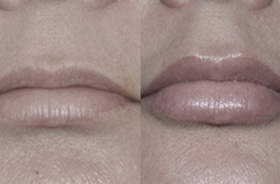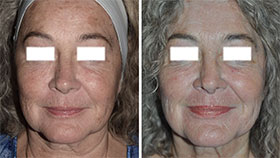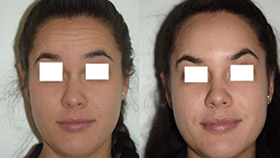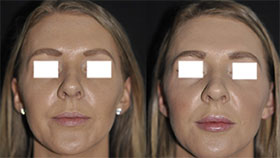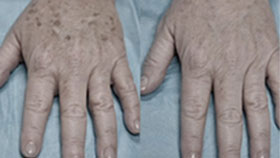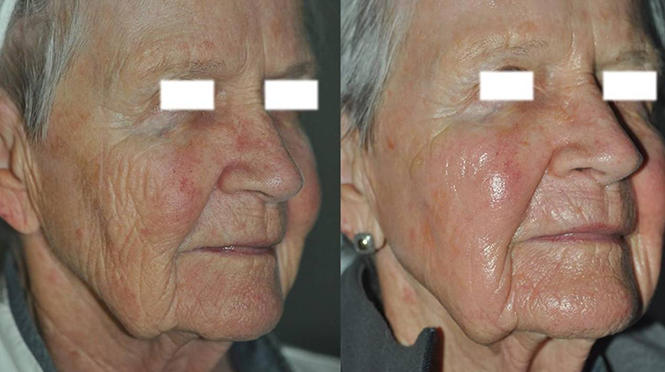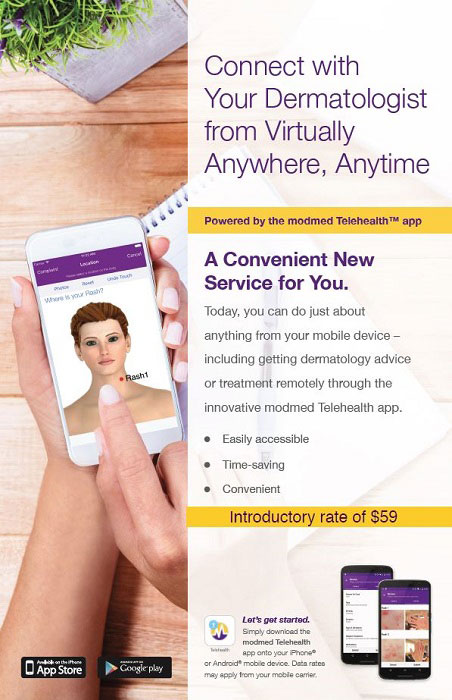Summer Sun & Dark Spots: What You Need to Know About Hyperpigmentation
Summer can take a significant toll on your skin. Increased sun exposure, especially common in high-UV regions like Florida, stimulates unwanted discoloration, including sunspots, melasma and post-inflammatory hyperpigmentation that lingers long after summer has ended.
Accumulated sun damage over time causes smooth brown marks called solar lentigines, also known as sunspots or liver spots. These usually develop later in life, on sun-exposed skin of the face, arms, and hands, and affect adults of all skin types. Solar lentigines, although unsightly, are benign skin lesions. Treatment with topical lightening creams tends to be temporary.
Prescription-strength tretinoin cream may provide longer resolution. Laser therapy that targets the brown pigment melanin in the skin is a more successful approach, fading solar lentigines in two to four treatments. Dermatologists also perform cryosurgery with liquid nitrogen to remove sunspots, but there is a risk of residual hypopigmentation.
Melasma presents as more diffuse patches of hyperpigmentation of the face, especially over the cheeks, forehead, and upper lip. This condition is more common in women and may be associated with hormonal factors, including pregnancy and birth control pills. Melasma is a very photosensitive condition that can be triggered by light in both the visible and UV spectrum.
The hyperpigmentation of melasma can be stubborn to treat. Hydroquinone, a topical prescription medication which fades pigment by blocking the production of melanin, is a common treatment for melasma. Hydroquinone is often prescribed in combination with tretinoin cream to enhance its effectiveness. Prolonged use of hydroquinone is limited, however, by the potential to develop a paradoxical brownish discoloration known as exogenous ochronosis. Continuous application should not exceed three months’ duration.
Other topical agents, such as kojic or azelaic acids, may be safer options for prolonged use. A series of superficial glycolic acid chemical peels speeds up pigment resolution in addition to topical therapy. Laser treatment for melasma is unrewarding due to high recurrence rates and risk of post-inflammatory hyperpigmentation. Oral tranexamic acid is sometimes prescribed in refractory cases but carries a risk of blood clots while undergoing treatment and high relapse rates once off the medication.
Skin conditions, including contact dermatitis, eczema, allergic reactions, and acne, create inflammation that leaves residual discoloration known as post-inflammatory hyperpigmentation or PIH. This condition resembles melasma but occurs in the distribution of the original rash. PIH has a higher incidence in people with darker skin tones. Although it usually resolves over time, it can last for months to years, especially in the absence of sun protection. Treatment is limited to topical medications because procedures such as lasers may cause further inflammation and darkening of pigment.
To reduce the chance of dark spots, consider the following:
- Prevention is the best cure. Protect your skin from the effects of UV exposure before the damage starts. Wear physical protection with clothing and hats, use broad-spectrum UVA/UVB SPF 30 or higher sunscreen, and avoid peak hours of the day. Make sun protection part of your daily life, not just your summer routine.
- For melasma, try a tinted sunscreen with iron oxides to block visible as well as ultraviolet light, for example, EltaMD™ UV Clear Tinted Broad-Spectrum SPF 46.
- Limit use of products that contain hydroquinone to a three-month duration and avoid altogether when pregnant or nursing.
- Add topical antioxidants such as vitamin C and niacinamide (vitamin B3) to your daily routine to prevent sun damage and complement the action of lightening agents. For example, SkinCeuticals™ Discoloration Defense contains both niacinamide and kojic acids.
- Consult with your dermatologist, who can accurately diagnose your condition and determine the best treatment plan for you.
Searching for the most effective treatments for hyperpigmentation? Contact our Florida-based Skin Wellness Physicians team at (239) 732-0044 or message us online if you would like to book a consultation.



